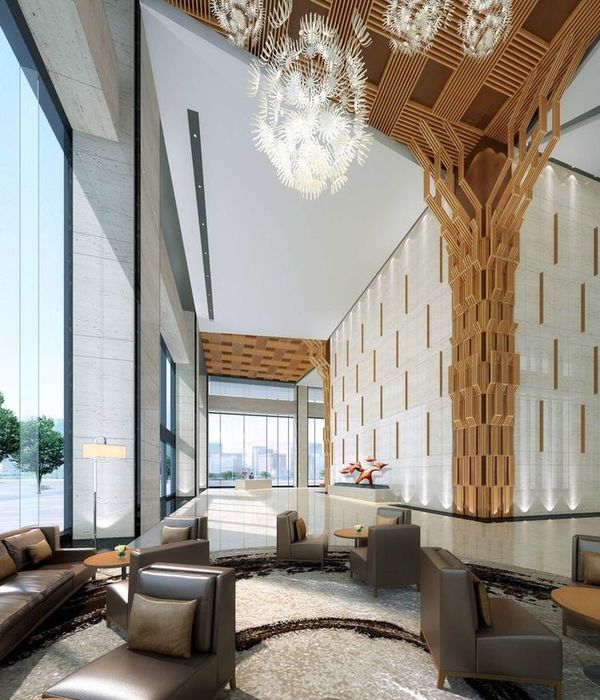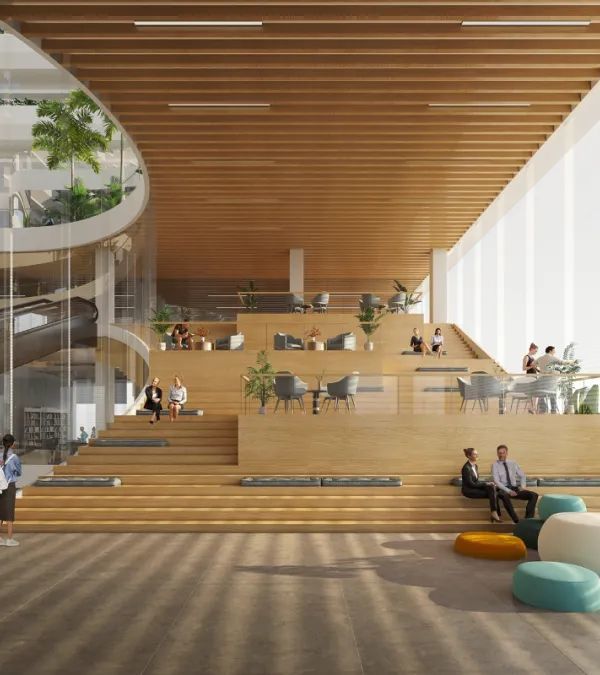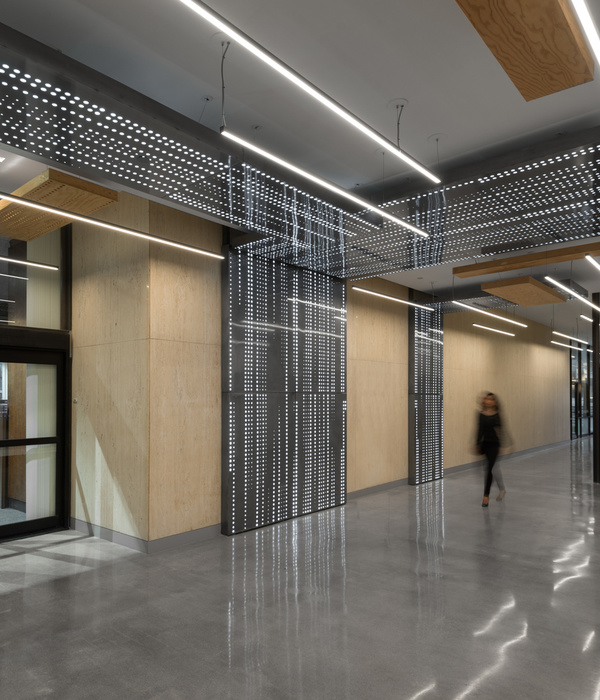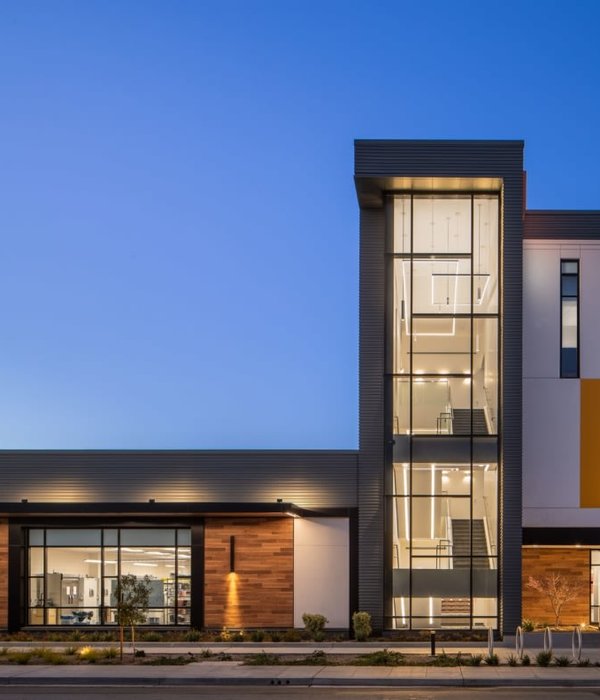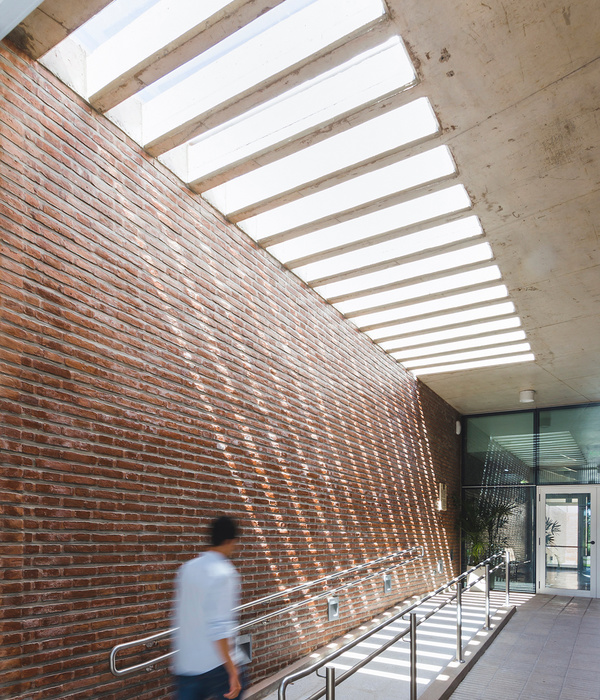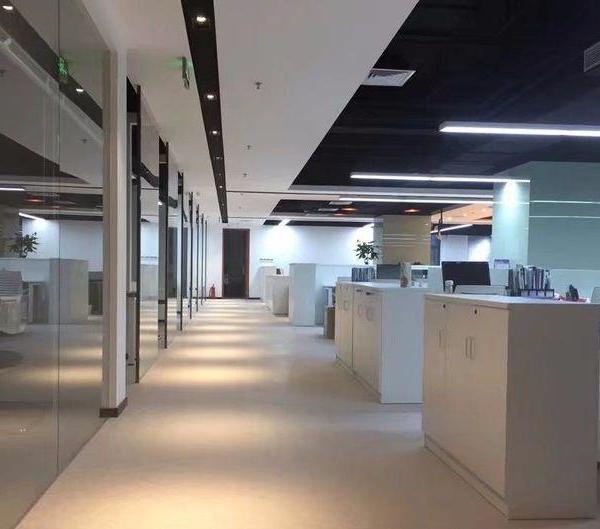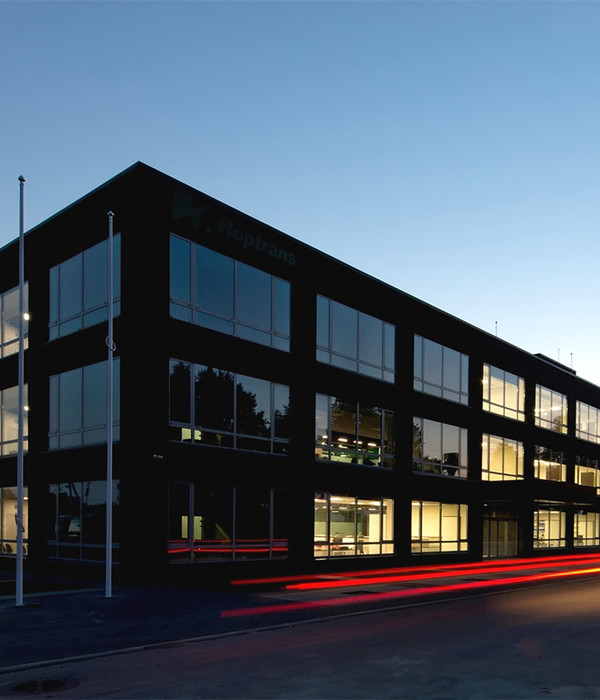项目坐落于韩国京畿道著名的坡州艺术村(Heyri Village)。各种类型、形式、材料的建筑组成了这里复杂的城市肌理,这既是坡州艺术村的优势也是劣势,最终构成了其虽缺乏秩序但却自由多样的城市肌理特点。
The formation of a city in which various architectural types, materials, and forms are constructed is both a strength and a weakness of Heyri Village. It failed to create any order in the province and became a city freely composed of diversity.
▼项目与周边环境概览,overall of the project and surrounding environment © Sun Namgoong
因此,与其使复杂的城市环境更加复杂,UNSANGDONG事务所选择用一种最基本的建筑词汇,即用墙体去构筑建筑空间。在传统的理念中,墙体是经典的限制性结构,它建立起空间的边界,阻碍空间中的交流。受到“时空体理论”的启发,建筑师用一种独特的方式赋予了墙体新的定义,为使用者创造出奇妙的视觉体验与空间情景。
Instead of creating another complexity in a complex city, we tried to construct an architectural space through the wall, the most basic architectural vocabulary. The walls of the past are classical by structural limitations and have limitations that block spatial communication. By transforming these past walls, we try to create experiences and situations that have been changed by the chronotope setting.
▼外观概览,overall of the building © Sun Namgoong
▼由延伸出来的墙体定义出的建筑空间,The building space is defined by the extended wall © Sun Namgoong
▼由道路看建筑,viewing the project from the street © Sun Namgoong
▼墙体围合出花园、构成露台,The walls enclose gardens and form terraces © Sun Namgoong
“时空体”(Chronotope)可以是一种通过使具有指示性的轴线相交的形式来整合空间和时间的方法。这个概念为人们提供了一种全新的角度去探索“墙”的可能性,通过质疑“墙”的建筑本质来抵制形式的理论化和系统化。从建筑主体上延伸出来的墙,并不是一种分离和切割的结构,相反,而是作为一种整合空间与时间、创造连续性的元素。
▼内部空间分析,diagram © UNSANGDONG Architects Cooperation
▼墙体与内部空间的关系,spatial relationship between the walls and the volume © UNSANGDONG Architects Cooperation
Chronotope can be a method of integrating space and time through the fusion of several indicators and the intersection of axes. It is used to explore the possibility of a wall through a new definition in a way that resists formal theorization and systematization by questioning the architectural essence of an existing wall. The architecturally borrowed wall is not used as a structure of severance and division, but it is used as a frame of opposite attitudes such as integration and continuity, simultaneous space, and continuous time.
▼富有节奏感的沿街立面,rhythmic facade along the street © Sun Namgoong
▼侧立面,side facade © Sun Namgoong
13堵向外辐射的墙体创造出一系列相关联的外部空间,使外部环境自然渗透到建筑之中。这些墙体围合出花园、构成半室外露台区域以及屋顶露台区域,为人们提供了享受户外空间的理想场所。值得一提的是,贯穿屋顶露台的墙面上设有连续的开口,形成了一个开放式的景观结构,将露台变身成开放式屋顶花园,在这里,人们既可以享受自由支配空间的乐趣,又能够享有墙体创造出的私密氛围。
▼最上层屋顶露台,top roof terrace © Sun Namgoong
▼俯瞰屋顶露台,overlook the roof terrace © Sun Namgoong
▼开放式的景观结构,open landscape structure © Sun Namgoong
▼连续的开口贯穿了所有墙体,Continuous openings run through all the walls © Sun Namgoong
▼阳台,balcony © Sun Namgoong
We propose a nature penetrated architecture by inserting outside space between 13 walls. A garden space surrounded by a wall, a semi-outer terrace area, and a roof terrace is configured for enjoyment of the outside. In particular, the rooftop has an open landscape structure that penetrates the entire wall. It becomes an open roof garden where people can freely occupy and enjoy the space between walls.
▼室内空间概览,overall of interior © Sun Namgoong
▼开敞通透的空间氛围,Open and transparent space atmosphere © Sun Namgoong
▼室内外的界限十分模糊,The boundary between inside and outside is very blurred © Sun Namgoong
▼底层平面图,1F plan © UNSANGDONG Architects Cooperation
▼二层平面图,2F plan © UNSANGDONG Architects Cooperation
▼三层平面图,3F plan © UNSANGDONG Architects Cooperation
Location:60, Heyrimaeul-gil, Tanhyeon-myeon, Paju-si, Gyeonggi-do, Republic of Korea 10859 Use:Living facility Site area:1,223.20㎡ Built area:574,66㎡ Total floor area:1,231.28㎡ Floor:3F Structure:RC Height:12m Design period:2018. 05 ~ 2019. 10 Construction period:2019. 12 ~ 2021. 05 Architect:Jang YoonGyu Jang, ChangHoon Shin Design team:YoungDong Goh, SangHyun Choi, EunSol Ko, ARa Cho, NaRye Han, SoHyun Yim, MyeongGil Jung, SeoYeon Joh Construction:SEUM Photographer:Sun Namgoong
{{item.text_origin}}



